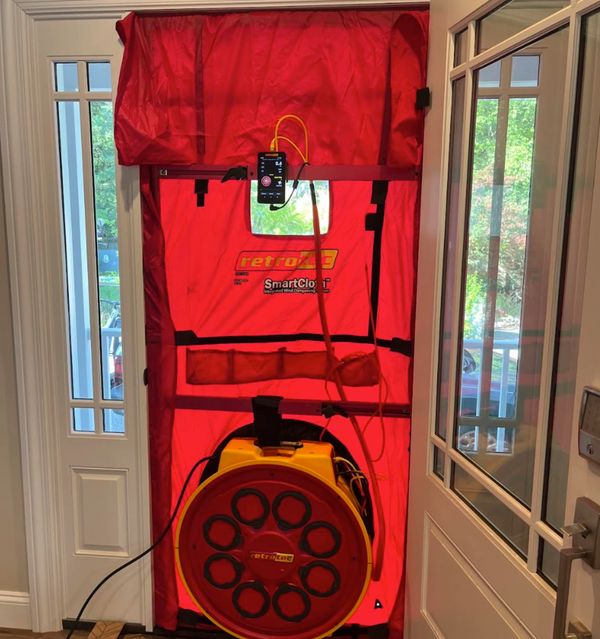
What is Building Envelope Testing?
Building envelope testing, also known as building enclosure testing, evaluates how well
a building's exterior components—such as walls, roofs, windows, and doors—resist air
and water penetration. This testing is crucial for identifying vulnerabilities that could lead
to energy loss, moisture damage, and structural issues.
Purpose of Building Envelope Testing
Quality Assurance
Quality Assurance
Quality Assurance

Ensures that the building is constructed according to design
specifications and meets industry standards for performance.
Energy Efficiency
Quality Assurance
Quality Assurance

Identifies air leaks and insulation failures that can lead to
increased energy costs and discomfort for occupants.
Moisture Control
Regulatory Compliance
Regulatory Compliance

Detects potential water infiltration points that could cause
mold growth and structural damage.
Regulatory Compliance
Regulatory Compliance
Regulatory Compliance

Helps in meeting building codes and standards, such
as LEED certification requirements.
Testing Methods
Air Leakage Testing
Water Penetration Testing
Water Penetration Testing

This involves pressurizing or depressurizing the building
using a blower door fan to measure the rate of air leakage. Standards such as
ASTM E779 are commonly used for this testing.
Water Penetration Testing
Water Penetration Testing
Water Penetration Testing

Simulates rainfall by spraying water on the
building's exterior while under negative pressure to assess its ability to resist
water infiltration. ASTM E1105 is a standard for this method.
Thermal Imaging
Visual Inspections
Visual Inspections

Uses infrared cameras to detect areas of heat loss or gain,
indicating insulation deficiencies or air leaks.
Visual Inspections
Visual Inspections
Visual Inspections

Engineers conduct thorough inspections of the building
envelope to identify visible signs of damage or wear.
The Testing Process
Preparation
Equipment Setup

Inspect the building envelope for any visible issues and make
necessary repairs before testing.
Equipment Setup
Equipment Setup

Use specialized equipment to create pressure differences
and measure airflow rates.
Data Analysis
Data Analysis

Analyze the collected data to identify weaknesses and
recommend improvements.
Conclusion
Building envelope testing is a critical practice in the construction and maintenance of
buildings. By employing various testing methods, building professionals can ensure that
structures are safe, energy-efficient, and resilient against environmental challenges.
Regular testing and maintenance can significantly enhance the longevity and
performance of a building's envelope, providing peace of mind to owners and occupants
alike. For more detailed insights, consider consulting specialized testing agencies or
professionals in the field.
Read More
For more in-depth information, we encourage you to read the
This website uses cookies.
We use cookies to analyze website traffic and optimize your website experience. By accepting our use of cookies, your data will be aggregated with all other user data.
